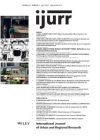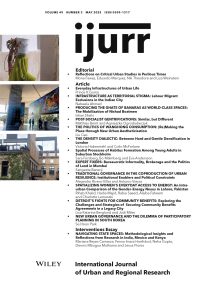The disparate distribution of energy and housing infrastructures in many megacities of the global South raises issues of equity and spatial justice, particularly for women. An intra-urban comparison helps unpack the specific socio-spatial characteristics of the gender–energy nexus, particularly in low-income neighbourhoods that represent one form of peripheral urbanization. This article contributes to the limited literature on low-income urban women’s lived experiences and everyday energy practices. Using a mixed-methods approach that combines 424 questionnaire surveys and 21 semi-structured interviews with low-income women across five case study sites in Lahore, it investigates women’s energy access and use in domestic and open/public spaces, and workplaces. The study reveals significant infrastructural variations and gendered inequities within and across peripheries, and in their relation to urban cores. It demonstrates how women’s peripheralized energy access is both spatially defined (e.g. in the heterogeneity of infrastructure available in peripheral neighbourhoods and in relation to their spatial proximity to urban cores) and socially contingent on their intersectional identities. The intra-urban comparison reveals the complex gendered energy practices and women’s subjective experiences of socio-material exclusion, underscoring the importance of moving beyond simplistic private/public dichotomies and instead adopting an intersectional lens in spatializing the gender–energy nexus when studying urban peripheries.
Details
Written by:
Rihab Khalid, Hadia Majid, Rabia Saeed, Alaiba Faheem, Charlotte Lemanski
Digital Object Identifier (DOI)
https://doi.org/10.1111/1468-2427.13311
About DOI

